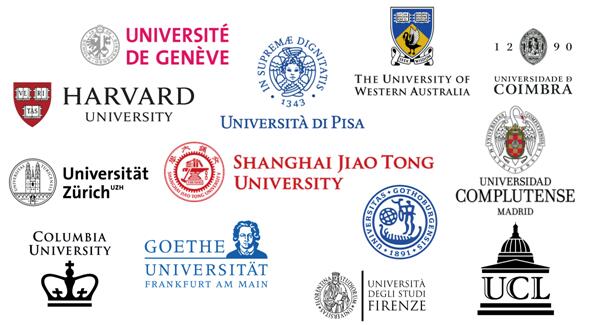Fudan oncology experts propose a "low toxicity" regimen for radiotherapy and chemotherapy for HPV related oropharyngeal cancer in the Chinese population, with reduced toxicity but no reduced efficacy
The toxic side effects of radiotherapy and chemotherapy are important challenges that affect the quality of life of patients with oropharyngeal cancer. Recently, Professor Lu Xueguan and Professor Xu Tingting's team from the Radiation Therapy Center of Fudan University Affiliated Cancer Hospital released a research result, which for the first time confirms that patients with human papillomavirus related oropharyngeal cancer in the Chinese population can benefit from a "low toxicity" regimen of radiotherapy and chemotherapy: using a low-intensity treatment plan can significantly reduce the adverse effects of treatment toxicity on their quality of life while achieving the same therapeutic effect, and thus better return to society. This achievement was published online in the top international journal of radiation oncology.
It is reported that oropharyngeal cancer includes tonsil cancer, tongue root cancer, soft palate cancer, pharyngeal posterior wall cancer, etc. Human papillomavirus infection is one of the main causes of oropharyngeal cancer. In recent years, the global incidence rate of HPV infection related oropharyngeal cancer is increasing year by year due to changes in the living habits of people such as sexual behavior, accounting for more than 60% of new cases in the United States.
In China, the incidence of HPV related oropharyngeal cancer was once considered much lower than that of European and American countries, so it did not receive sufficient attention. According to previous statistical data from Professor Lu Xueguan and Professor Xu Tingting's team at the Radiation Therapy Center of Fudan University Affiliated Cancer Hospital, the overall positive expression rate of HPV in oropharyngeal cancer is 57.6%, and there are significant differences in lesions in different sub locations, with tonsil cancer being the highest, reaching 68.8%.
Professor Lu Xueguan stated that based on past diagnosis and treatment experience in China, the first treatment for HPV positive oropharyngeal cancer is mainly surgical intervention, supplemented by radiotherapy and chemotherapy. In recent years, a large number of studies have shown that the prognosis of HPV related oropharyngeal cancer is significantly better than that of HPV unrelated oropharyngeal cancer. One of the important reasons is that this tumor has high sensitivity to radiotherapy and chemotherapy.
Previously, the radiation therapy center of the tumor hospital used a comprehensive radiotherapy and chemotherapy model to treat a large number of HPV positive cases of oropharyngeal cancer. Retrospective data showed that this group of patients had a higher response rate after receiving induction chemotherapy, were relatively sensitive to radiotherapy and chemotherapy, and most patients could achieve long-term survival. This suggests that a non-surgical treatment model mainly based on radiotherapy and chemotherapy is one of the ideal choices for this patient population.
Professor Lu Xueguan's team further observed that after treatment, patients had varying toxic reactions such as difficulty swallowing and oral mucositis, which had a certain impact on their recovery and quality of life. Therefore, whether it is possible to further reduce the therapeutic toxicity of patients while retaining the therapeutic effect has become a key focus of the team's efforts.
A total of 48 newly diagnosed HPV positive oropharyngeal cancer patients were enrolled in this Phase II prospective study. After receiving two courses of docetaxel combined with cisplatin induced chemotherapy, patient screening was conducted. Patients who achieved deep remission in the primary lesion and cervical metastatic lymph node regression were considered to have high chemotherapy sensitivity and good prognosis. Subsequently, low-dose simple intensity modulated radiation therapy was given, while synchronous chemotherapy was exempted; Those who have not achieved deep remission will continue to receive standard synchronous radiotherapy and chemotherapy, including standard dose radiotherapy, combined with two cycles of synchronous cisplatin chemotherapy. In the end, 26/48 patients met the criteria for reducing treatment intensity, while 22/48 patients still received routine treatment.
The data shows that the 2-year progression free survival rate and overall survival rate of the entire group of patients are 85.4% and 93.6%, respectively. Among them, the low-intensity treatment group has a 2-year progression free survival rate and an overall survival rate of 100%. In addition, the incidence of grade 3/4 oral mucositis, grade 1/2 leukopenia, chemotherapy related nausea and vomiting, fatigue, weight loss, hyponatremia, and liver and kidney toxicity were significantly reduced in the low-intensity treatment group. Experts say that the results of this study have confirmed for the first time that low-intensity treatment can achieve reduced toxicity without reduced effectiveness in patients with HPV related oropharyngeal cancer in China. It can significantly reduce the adverse effects of treatment toxicity on the quality of life of patients, allowing them to return to normal life more fully.
It is reported that the Radiotherapy Center of the Cancer Hospital is currently conducting an IChoice-02 study, which uses PD-1 monoclonal antibody immunotherapy combined with TP regimen chemotherapy as an induction regimen to guide subsequent intensity reduction treatment. Currently, more than 50 patients have been enrolled, and the preliminary results are encouraging. The study will also attempt to use plasma free HPV-DNA liquid biopsy and multi omics analysis to predict therapeutic effects, providing important basis for future attempts to propose genotyping of oropharyngeal cancer and benefiting more HPV related oropharyngeal cancer patients.




